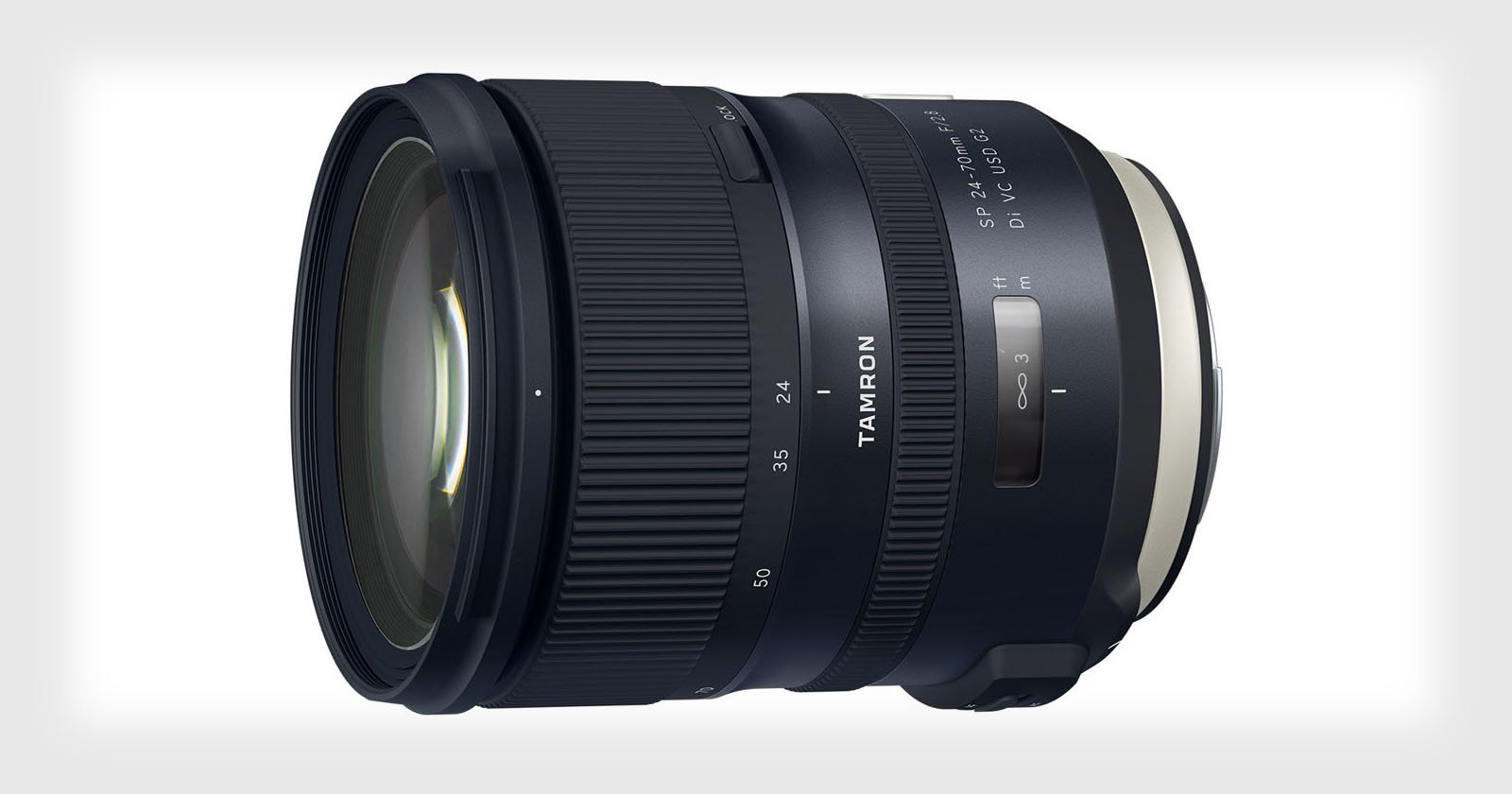
![]()
In the ever heated debate of Tamron vs. Sigma vs. Nikon vs. Canon, a new lens has arrived. Tamron has released an update of their popular 24-70mm f/2.8 lens.
Ever since Tamron began to create the new SP series lenses, starting with the 45mm, 35mm, and 15-30mm lenses, they’ve been hitting home runs. Having extensively used the 45mm f/1.8 SP lens, and doing a few shoots with their other new lenses, I had high hopes for the new Tamron 24-70mm f/2.8 G2 VC.
Note: This review contains a few photos that may not be work-friendly.
Family Lineage
I don’t like to review lenses in a very technical sense, but I will touch on the big image quality qualifiers that you should look for when buying a lens: sharpness, chromatic aberration control, distortion, and build quality. With that in mind, I think it’s important to compare this lens with its predecessor, the original Tamron 24-70mm.
In short, it’s better, and by a wide margin. Though if you have ever used or owned the original Tamron 24-70mm you know it’s a great lens. In my use, the biggest areas of improvement are in the image stabilization, bokeh (a very specific issue with the original), and build quality. In terms of sharpness, both are wonderful, the G2 likely having a slight edge.
Tamron claims almost five stops of image stabilization on the G2 version, and I’d say that’s pretty accurate. The below image of this swing set was shot just after sundown at 1/15th of a second. It’s followed by a 200% crop to show the detail still captured at such a slow shutter speed.
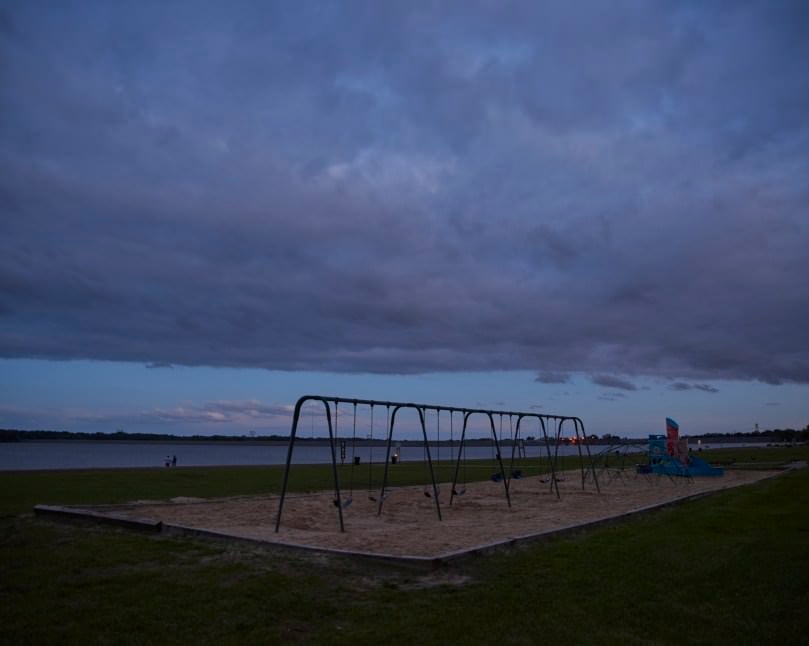
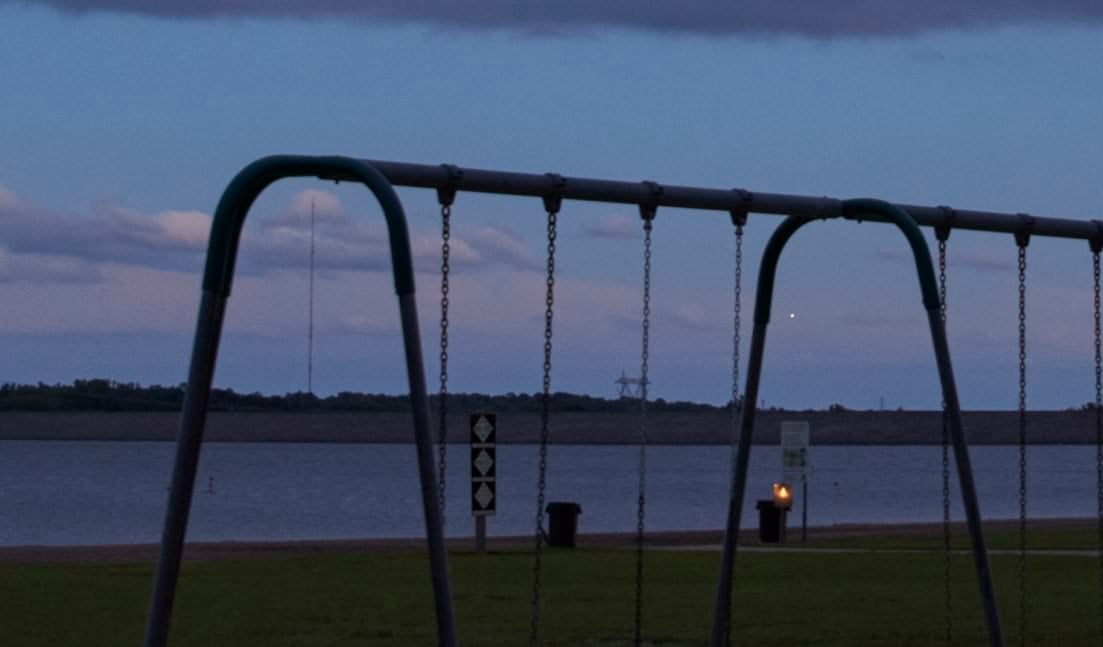
Depending on what you’re shooting, this may or may not be useful. For documentary, landscape, and most general photography, this feature allows for a much lower ISO and thus a cleaner image. The original was around three stops of effective stabilization, so this is a big improvement.
On to the bokeh, a hot topic for many portrait and wedding photographers. The original 24-70mm from Tamron occasionally would show some ‘onion rings’ in the bokeh that could be distracting in close up portraits and detail shots. When the internet complained, Tamron listened. The new 24-70mm G2 has seemingly solved this problem entirely. What caused the issue in the original lens is unknown to me, as is how it’s been solved in the new lens, but this brings the Tamron even closer to the venerable Nikon 24-70mm f/2.8E VR in image quality.
Speaking of Nikon’s ever popular lens, build quality is a major factor more most people when purchasing lenses in this price range. Immediately after opening the Tamron 24-70mm G2, I could tell that everything from the plastic to the rubber and weather seals had seen a huge improvement. Other than the Nikon being quite noticeable heavier, creating a very real sense of quality, the Tamron feels solid in the hand and more like a tool than a second rate option.
![]()
Examples
In the few days that I had the lens, I shot as much of a variety of subjects as time and weather would allow. One of the first things I used the lens for was an early morning swimwear shoot, a perfect place to look at how the lens handles extreme backlight and flare.
In the first shot below, the sun is relatively obscured thus not creating a very extreme scenario for the lens. What is evident upon looking at the 100% and 275% crops are just how well the lens handles chromatic aberration, even wide open.
![]()



There is very little ghosting or flare with the hood in place, as expected with the coatings that the SP lenses have been getting. Sharpness is what you would expect from a 24-70mm f/2.8, even on a D810. The new Nikon VR version may have a slight edge, but not enough to notice in real world use.
![]()
![]()
Another shot from that morning shows how sharp it is wide open at f/2.8. For portrait and wedding photographers this can be a deal breaker, and Tamron did not disappoint. A 150% crop is below.
![]()
![]()
In what may have been perfect timing, my brother took delivery of his Tesla Model S a week or so prior. What better way to test the lens, again with hard contrast and severe backlighting. In the first image below, you can see the sun clearly in the frame, shining straight into the lens.
Surprisingly, I didn’t encounter issues with flair unless the sun was at an oblique angle in relation to the front element. There’s also little lack of contrast or color caused by the sun directly in the frame. This is impressive for a lens at this price.
Below is a wide shot of the car and the river bank we parked it near. At 24mm there is a bit of distortion on the raw file right out of camera. However, once the lens correction for the original version of the lens is applied, the issue disappears. I’m sure that once there is a Capture One profile for the G2 this will be even less of an issue.
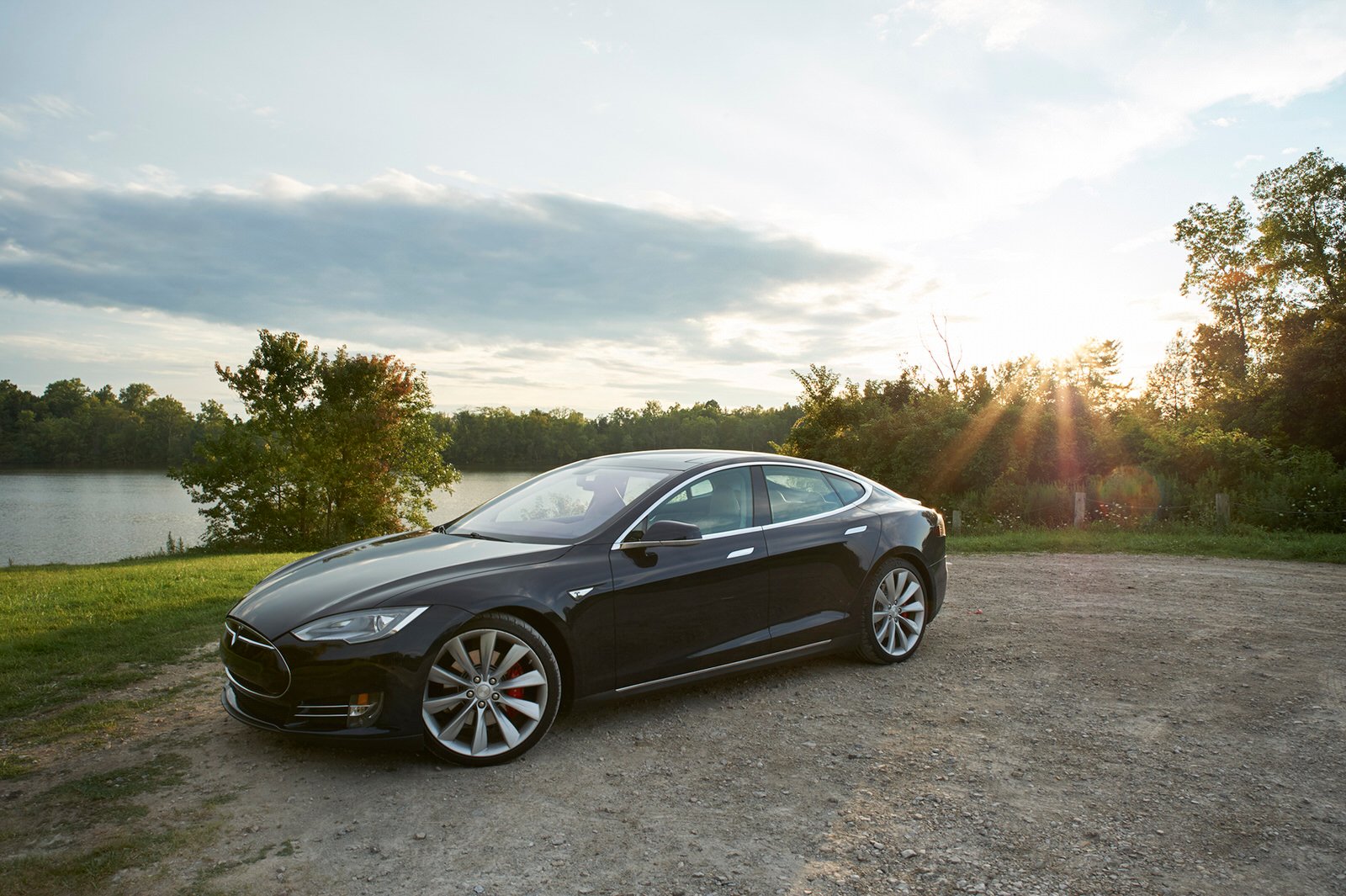
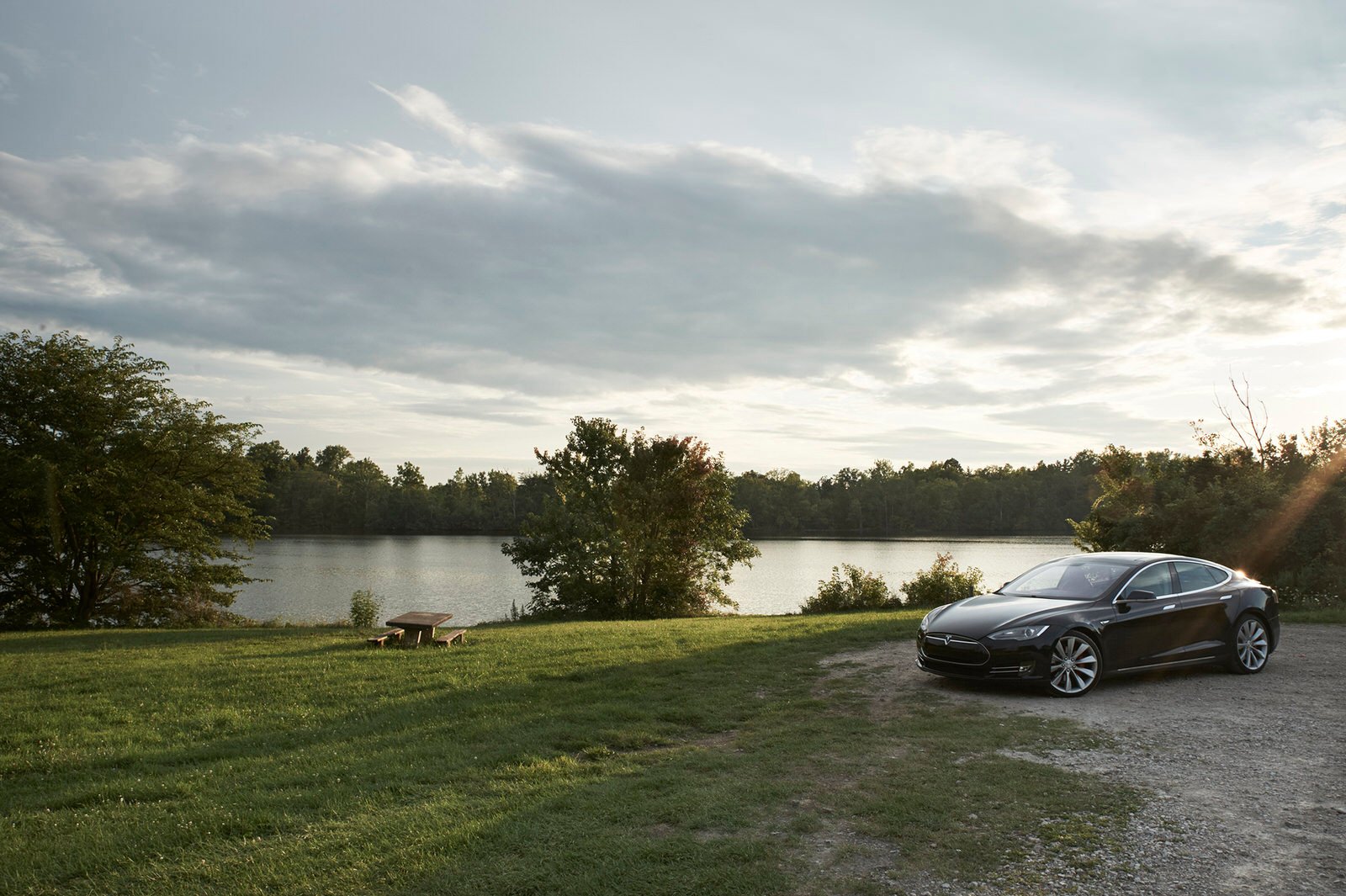
For car interiors, the distortion was never as much of an issue. From the spacious back seats of the Model S, I was able to get some nice shallow depth of field shots of the cockpit at f/2.8. This helps give a sense of depth in the car, which it certainly has.
![]()
![]()
![]()
With the 24-70mm having a versatile focal range, making it ideal for almost every genre, I thought it best to try some landscape images, with filters attached. While I used the Vu (now Benro) 100mmx100mm system and their 10-stop neutral density filter to extend my shutter speed, the lens uses a common 82mm filter thread. This makes mounting filters of all types easy, albeit a little expensive because of the size.
These images were all shot on a tripod and were between 15-30 seconds long. In this most ideal of situations, with a small aperture and study carbon tripod, the lens performed to its fullest potential. Although this lens is meant for maximum versatility with its fast aperture and amazing image stabilization, it is just as at home on a tripod. The day these were taken it was raining lightly the entire time I was shooting.
By the end, both my Nikon D3s and the lens had a fair bit of moisture on them. Neither caused a fuss, and the lens coatings proved to be extremely effective at stopping water build up on the lens in these conditions. For serious landscape work, the Tamron 24-70mm G2 checks all the boxes.
![]()
![]()
![]()
In my home court, another controlled environment, I used the lens for two different studio portraits. These were both photographed on the Nikon D810 with good external lighting, leaving little room for shake or noise.
![]()
![]()
The wider end of this lens may not be especially useful for studio work, but for photographers that are inside and outside a lot, the 24-70mm G2 provides a focal range for everything from group shots and tight interior portraits to headshots and other studio work. Because of the great stabilization, this lens is a dream for balancing low ambient light with strobe. Instead of increasing ISO, and thus needing a strobe that can achieve a lower power, you can simply drag the shutter and still maintain sharpness.
Verdict
If you’re looking for a 24-70mm and you don’t want to break the bank (or your back for that matter) the $1,199 Tamron 24-70mm f/2.8 G2 VC is hands down the best option, much more so than its predecessor. With marked improvements in build quality and optical performance, the new lens has added even more value to the Tamron line-up. My only complaint stems from the distortion that is apparent at 24mm if left uncorrected. Otherwise, the lens does exactly what you want and what you need, plus a little extra.
If you’re in the market for the one lens that will do everything for you, this is it.
About the author: Spencer Lookabaugh is a portrait and nature photographer based in Columbus, Ohio. You can find more of his work on his website and Instagram. This article was also published here.
Image credits: Photographs by Spencer Lookabaugh/Midwest Photo Exchange and used with permission

